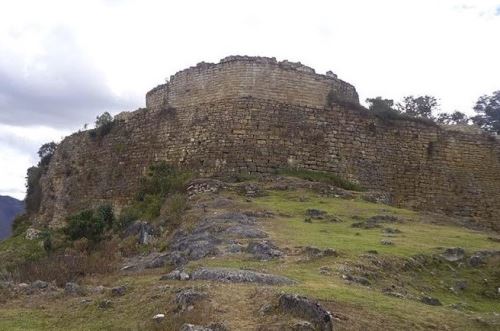The fortress consists of several buildings surrounded by massive exterior stone walls that amaze those studying Chachapoyas culture.
This site is a big artificial platform heading to the north, settled on the top of calcareous rocks at the summit of Barreta Hill —situated in Luya province 767 km northeast of Lima, at an altitude of 3,000 meters above sea level in Amazonas region.
The structure is almost 600 meters long, and its walls rise up to 19 meters in height.
According to researchers, its construction must have started back in the 11th century, which coincides with the flowering of Chachapoyas culture, and its occupation phase must have ended in the mid-16th century.
Its impressive walls and complex interior architecture are signs of a well-organized population, including administrative, religious, ceremonial, and permanent resistance buildings.
One of the complex's highlights is the fortified citadel, oriented from north to south. This is one of the most stunning architectural vestiges of Chachapoyas culture.

Kuelap is surrounded by an ecosystem, characterized by the presence of humid montane forest, whose leafy trees are populated by bromeliads, orchids, moss, and lichens stuck to rocks.
As visitors step into the main entrance, they can appreciate its trapezoid-shape. It was previously covered by a false vault.
There are more than 550 structures at the top, all of them are round except for five —four are rectangular-shaped and one has a square shape.
How to reach Kuelap Fortress
Travelers need to reach Chachapoyas city first, situated at an altitude of 2,335 meters above sea level.
Once there, small buses running to Tingo Nuevo village are the best bet to continue the journey.
Finally, take a car journey to the new cable car system that allows rapid and direct access to the fortress.
Avoid heavy backpacks to ease the walk. Bring plenty of water, sunscreen, the right footwear, and repellent.